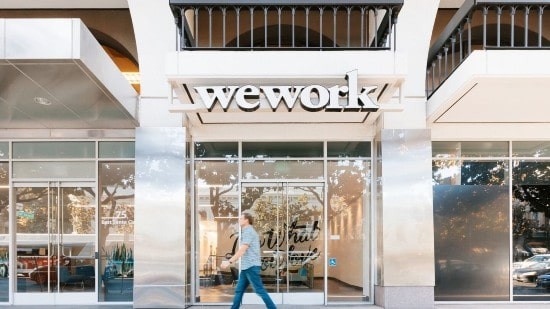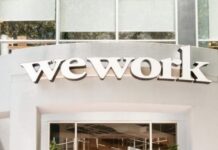WeWork (“the Company”), the world’s leading co-working and space-as-a-service platform, today announced the closing of its new $1.75 billion senior secured letter of credit facility.
Goldman Sachs is the administrative agent of the new facility. Goldman Sachs, Citibank, DBS Bank, Deutsche Bank, Mizuho, Natixis and Société Générale participated in the syndication as joint lead arrangers and joint bookrunners, and other banks continue to look into participation in the facility.
WeWork, which in December entered into the committed facility together with SoftBank Group Corp. (“SoftBank”), is not required to post any cash collateral under the new facility, making available approximately $800 million in working capital that was restricted under previous letter of credit facilities.
“This new letter of credit facility — which offers better terms and frees up significant balance sheet capital — marks the latest milestone in WeWork’s evolution,” said Marcelo Claure, Executive Chairman of WeWork. “We will continue to improve the company’s financial position, implement our new operating model and pursue disciplined growth on our path to adjusted EBITDA profitability by next year.”
READ ALSO : WeWork appoints Sandeep Mathrani as CEO
In addition, WeWork entered into a master note purchase agreement in December to formalize SoftBank’s commitment to provide up to $2.2 billion in unsecured debt. This unsecured debt financing, along with SoftBank’s commitment to provide up to $1.1 billion of secured debt financing and SoftBank’s credit support of this new $1.75 billion letter of credit facility, are part of a broader agreement with SoftBank reached last fall to bring significant new funding to the Company.
WeWork reported key financial and operational targets for the Company’s strategic and financial plan over the next five years. The WeWork targets include:
- 2020: First-ever $1 billion revenue quarter[1]
- 2021: Adjusted EBITDA positive[2]
- 2022: Free cash flow positive[3]
- 2023: 1 million memberships[4]
- 2024: $1+ billion of free cash flow
With a successful execution of its fully funded five-year strategic and financial plan, WeWork expects to have additional liquidity of $2.5-3 billion for future growth. The Company also anticipates it will reach 1,000 locations* worldwide by 2021.
In addition to WeWork’s strengthened financial position and strategic plan, WeWork has made recent leadership changes, with incoming Chief Executive Officer Sandeep Mathrani, a proven real estate executive, scheduled to start February 18. Kirthiga Reddy, a technology executive and Partner at SoftBank Investment Advisers, has joined the WeWork Board of Directors in the designated SoftBank Vision Fund seat formerly occupied by Ron Fisher. This is part of a planned director refreshment in line with corporate governance best practices. In addition, Mark Schwartz and Steve Langman have voluntarily resigned from the Board of Directors and Lew Frankfurt expects to resign upon completion of the investment transactions agreed to between WeWork and SoftBank, including the previously announced tender offer. WeWork will continue to appoint new directors who add strategic value and diverse perspectives to the Company in the months ahead.
*Includes total WeWork locations (consolidated and IndiaCo)
Definitions
1. Represents the first time within the year we will hit $1B in quarterly WeWork Membership & Services Revenue
2. Adjusted EBITDA – Adjusted EBITDA is defined as net loss before income tax (benefit) provision, all interest and other (income) expense, depreciation and amortization expense, stock-based compensation expense, expense related to stock-based payments for services rendered by consultants, income or expense relating to the changes in fair value of assets and liabilities remeasured to fair value on a recurring basis, expense related to costs associated with mergers, acquisitions divestitures, and capital raising activities, legal, tax, and regulatory reserves or settlements, significant non-ordinary course asset impairment charges and to the extent applicable any impact of discontinued operations, restructuring charges, and other gains and losses on operating assets. The most directly comparable GAAP measure to adjusted EBITDA is net loss.
3. We define as “Unlevered Free Cash Flow” as “Adjusted EBITDA excluding non-cash GAAP straight-line lease cost” and amortization of lease incentives” less “Net Capital Expenditures”. We define “Adjusted EBITDA plus non-cash GAAP straight-line lease cost and amortization of lease incentives” as net loss before income tax (benefit) provision, interest and other (income) expense, depreciation and amortization expense, stock-based compensation expense, expense related to stock-based payments for services rendered by consultants, income or expense relating to the changes in fair value of assets and liabilities remeasured to fair value on a recurring basis, expense related to costs associated with mergers, acquisitions, divestitures and capital raising activities, legal, tax and regulatory reserves or settlements, significant non-ordinary course asset impairment charges and, to the extent applicable, any impact of discontinued operations, restructuring charges, and other gains and losses on operating assets. This figure also excludes the impact of non-cash GAAP straight-line lease cost and amortization of lease incentives. We define “net capital expenditures” as the gross purchases of property and equipment, as reported in “cash flows from investing activities” in the consolidated statements of cash flows, less cash collected from landlords for tenant improvement allowances, as reported in the “supplemental cash flow disclosures” schedule in the cash flow statement.
4. “Membership” to be defined as “WeWork Memberships, excludes On Demand memberships and IndiaCo memberships”
View source version on: https://www.businesswire.com/news/home/20200211005575/en





















